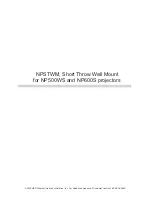1 of 13
Easy Rate™ Sensor
INSTRUCTION SHEET
PN 074-677-P1A
Introduction
This instruction sheet describes the proper installation, operation, maintenance, and
repair of the Easy Rate single and dual sensors.
This product has a warranty of one year from the date of purchase. This warranty covers
defects of materials or workmanship under normal proper use and service. Refer to the
INFICON website for warranty details. The batch number of the sensor can be found on
the packaging label. It is important to document this number for any necessary warranty
claims.
Figure 1 Easy Rate Sensors


















